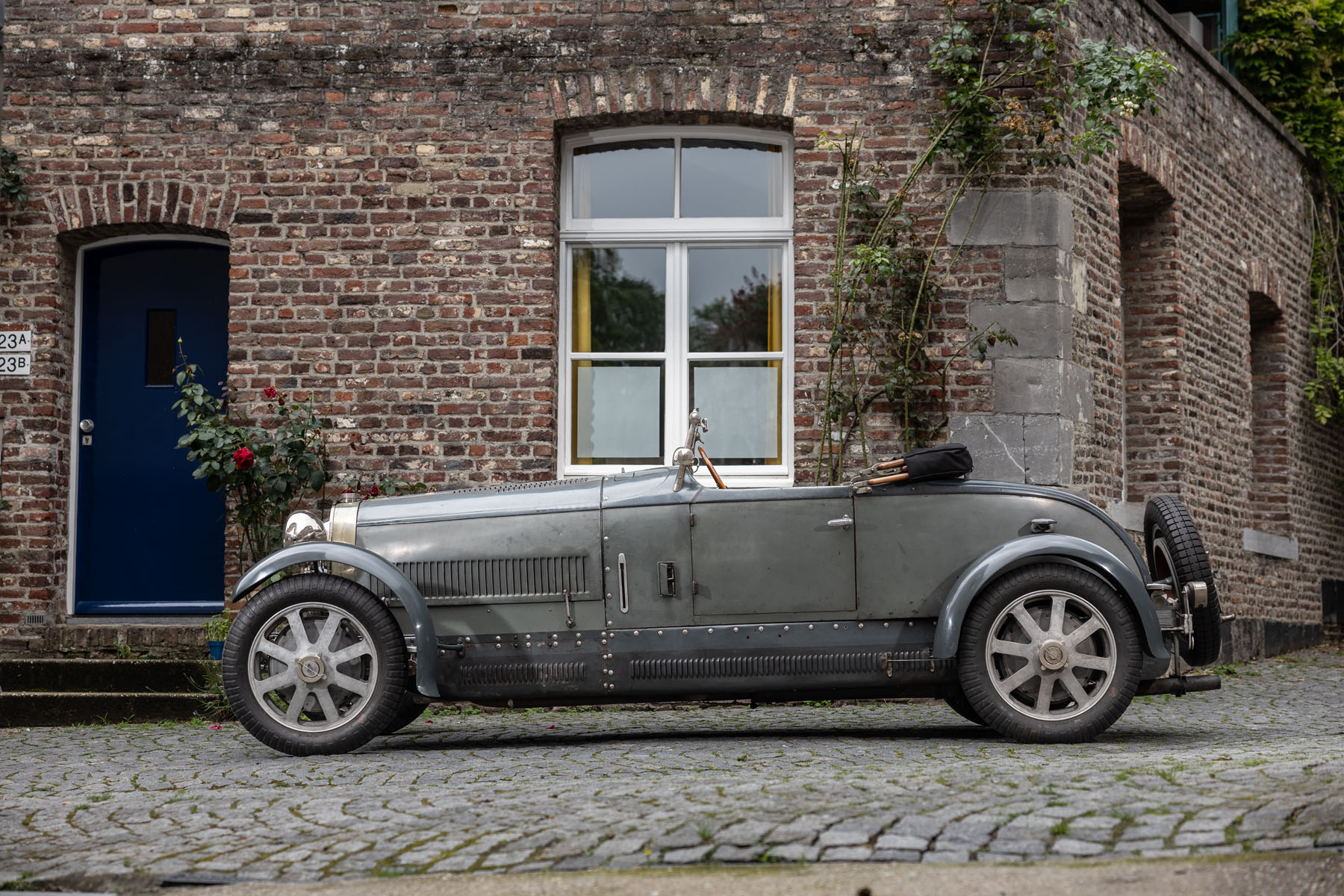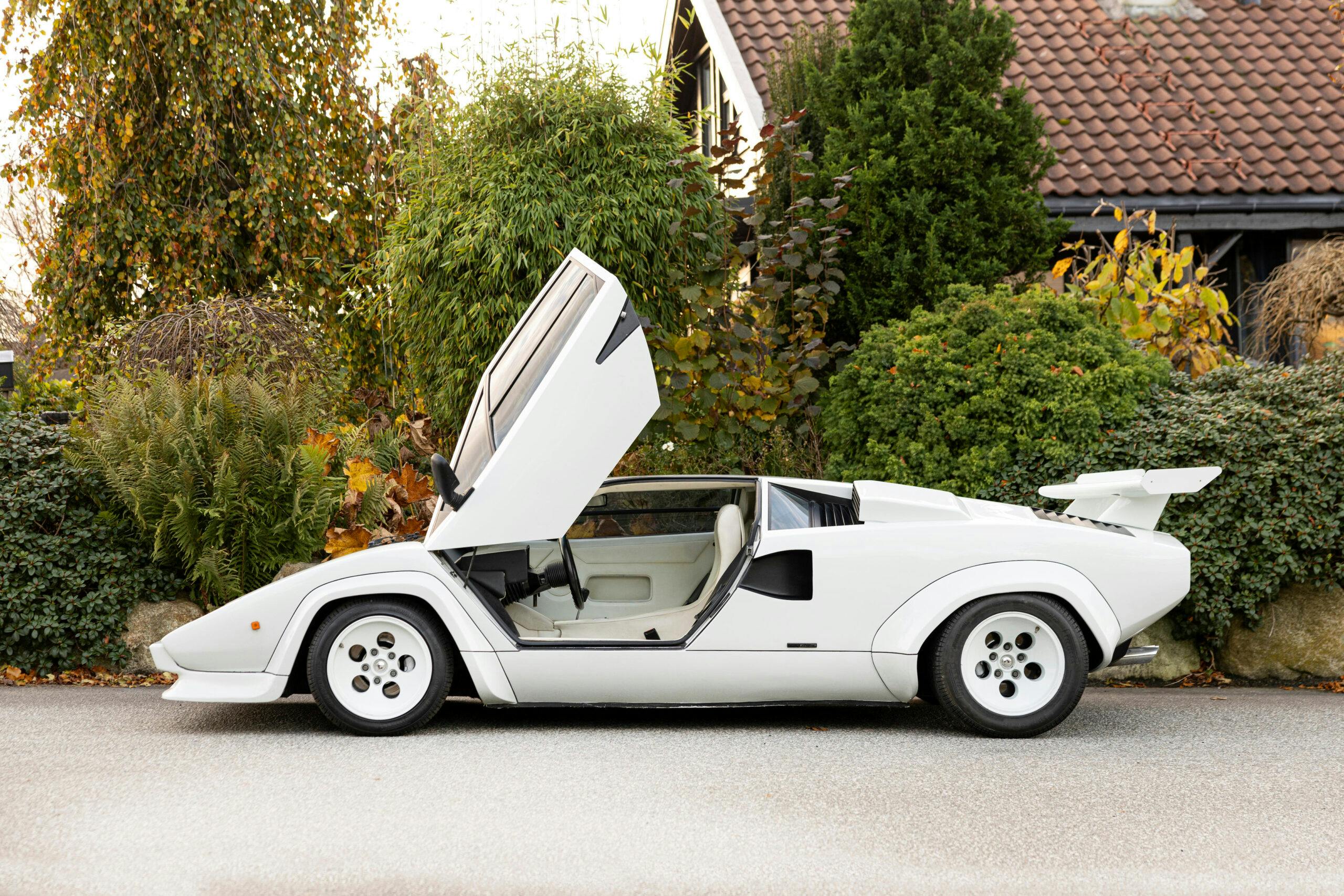Gooding & Company has been holding a London auction at Hampton Court Palace, one of Henry VIII’s favourite residences, since 2022. Held in conjunction with the Concours of Elegance, which is also on the palace grounds, the sale is a typical quality over quantity affair, with most consignments well into six- or low-seven figures.
This year Gooding brought 22 vehicles to the 30 August event, but just half of them sold, yielding £7,507,125 in total sales. The best of the bunch were a selection of Aston Martins and Bugattis. We look at them in detail below, with valuable notes on the condition of each car provided by our colleague Chris Sharpe, who looked over each car in person.

Lot 13: 1964 Aston Martin DB5 Drophead Coupe
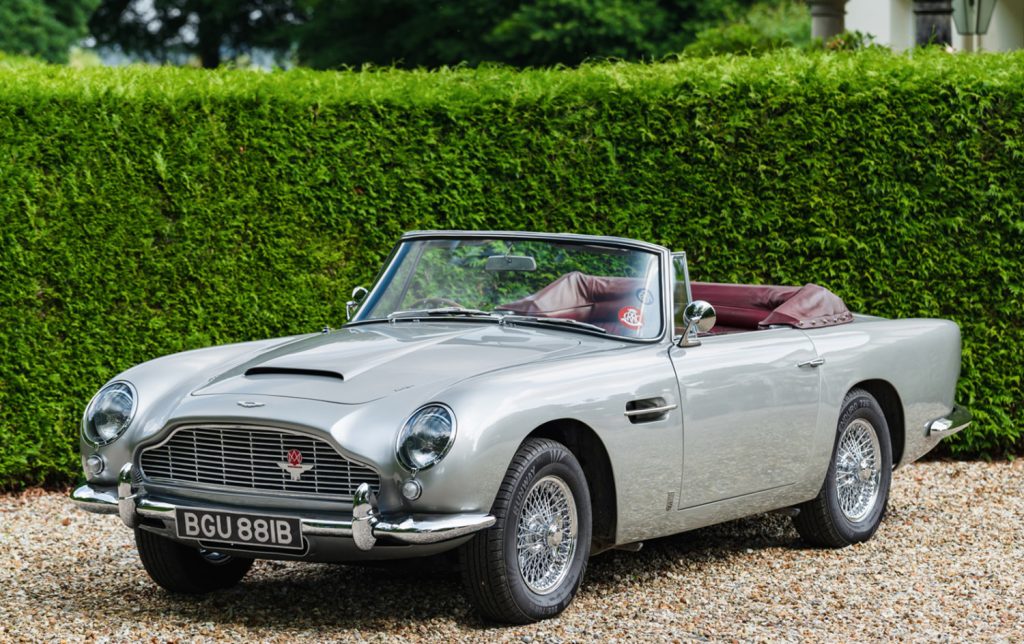
Sold for £658,125
Chassis no. DB5C1504R; Engine no. 4002203. Silver Birch over red leather with red top. Older restoration, #3+ condition
Equipment: 3995cc/282bhp I-6, ZF 5-speed, wire wheels, burgundy hardtop, leather boot cover, wood-rim steering wheel, power windows, pushbutton radio, tool roll.
Condition: Delivered new in the UK and one of 84 right-hand-drive convertibles built. Offered with a good looking yet practical and very rare removable hardtop. Accompanied by a factory build sheet and service records. Previously owned for 37 Years. Good paint and exterior trim with only a few small dings to the grille and minor imperfections to the chrome bumpers. Visibly faded leather and carpets but still a good showing. Never restored, just consistently and carefully maintained, most recently a 2019 repaint and a rebuilt rear axle in 2021.
Bottom line: The DB5 is arguably the prettiest of the David Brown–era Astons, and certainly the most famous thanks to James Bond. The convertible version, though, isn’t as well known by virtue of just how rare it is. Aston Martin built more than 1000 DB5s, but just 123 were convertibles, and most of those remained in the UK. In America, a good left-hand drive DB5 convertible can easily bring over a million dollars. This was a realistic result and there can be no complaints.
Lot 5: 1952 Aston Martin DB2
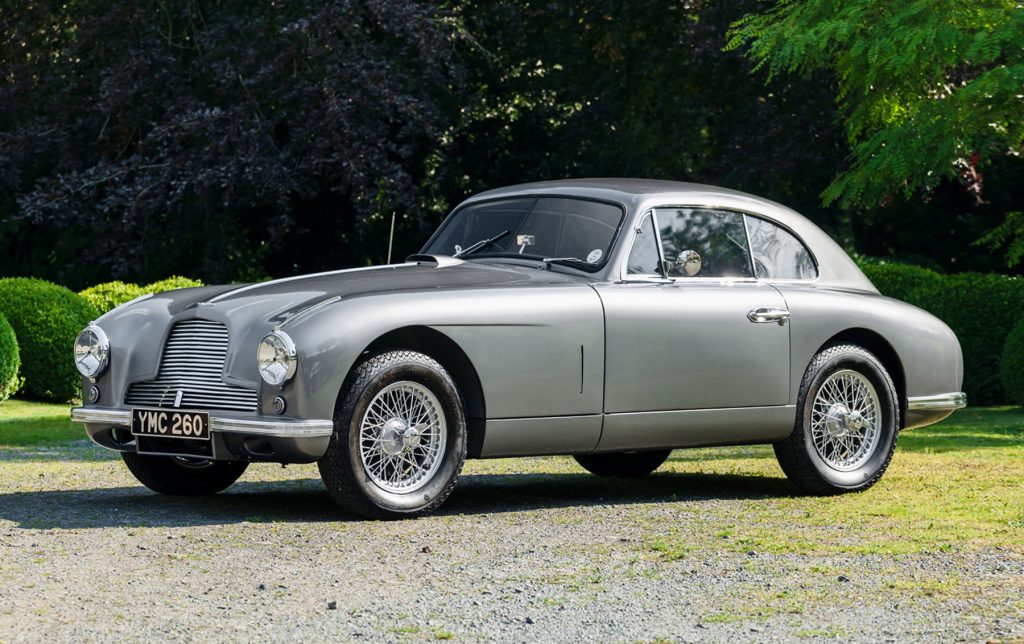
Sold for £146,250
Chassis no. LML5086; Engine no. LB6B50578. Moonbeam Grey over blue leather. Recent restoration, #2+ condition.
Equipment: 2580cc/140bhp I-6, 4-speed, wire wheels, radio, Smiths gauges.
Condition: Represented as matching numbers and with over £300,000 in restoration work in 2020. Finished in its original colours. One of just 309 DB2 coupes built. The high-value restoration is 100 per cent evident, and the car looks near concours-ready. The only imperfection evident is a hand-made silicon rear quarter window seal. Otherwise, it has a superb interior and great mechanicals.
Bottom line: The DB2 was the earliest Aston Martin developed under David Brown’s ownership of the company as well as its first six-cylinder production model. It’s both rare and usable on driving events in the UK, Europe, and the US, but this car sold under its £150K low estimate and indeed for a surprisingly low amount given the quality and freshness of its restoration. It’s not too big a stretch to imagine that if this car was Italian, you could slap another zero onto the end of this price and nobody would bat an eye.
Lot 4: 1974 Ferrari 365 GT4 Berlinetta Boxer
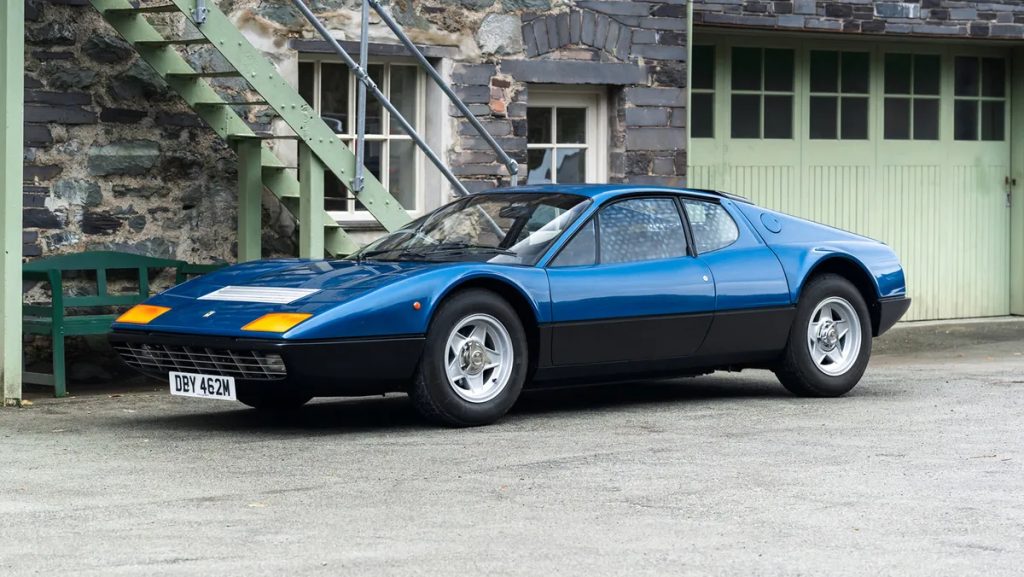
Sold for £270,000
Chassis no. 17649; Engine no. F102A00000039. Blu Chiaro over black leather. Recent restoration, #2- condition.
Equipment: 4391cc/380bhp flat-12, 5-speed, centrelock alloy wheels, power windows, Becker Europa stereo, Nardi leather-wrapped steering wheel.
Condition: Delivered new to the UK, one of just 387 first-series 365 GT4 Berlinetta Boxers made. Well-documented ownership history. New gearbox and speedometer replacement in the 2000s. Restored in 2020 with minimal use since. A very high standard of finish commensurate to a very cool car. The only imperfection is that the rear engine cover looks aged and uneven. The six small tailpipes are a notable intrigue, too. A very cool customer, indeed.
Bottom line: The BB (Berlinetta Boxer) story dates back to the 1971 Turin motor show, when Ferrari introduced the 365 GT4 BB as its mid-engined answer to cars like the Lamborghini Miura and Maserati Bora. The 180-degree layout of its 12-cylinder engine reduced the car’s centre of gravity, and this flat arrangement of the cylinders followed through to the Testarossa series that lasted into the 1990s. The later 512 BB and 512 BBi are the better known of the Berlinetta Boxer series, but these earlier 365s are rarer and worth a decent amount more money. This result is a reasonable one for the car’s condition.
Lot 16: 1928 Lancia Lambda 8th Series Torpédo
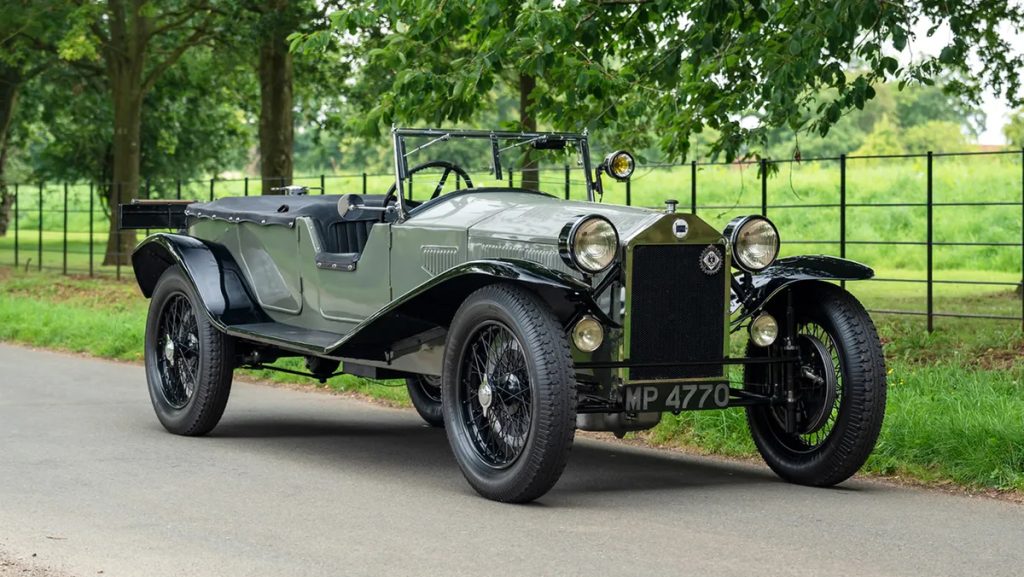
Sold for £528,750
Chassis no. 18609; Engine no. 8600. Silver and black over black. Recent restoration, #2+ condition.
Equipment: 2570cc/80bhp V4, 4-speed, painted wire wheels, spotlight on the passenger side, dual rear-mounted spares, 120-litre fuel tank with external filler.
Condition: Factory-prepared for and ran in the 1928 Mille Miglia. Represented with original body and engine. A FIVA Award winner at the Concorso d’Eleganza Villa d’Este. Mechanical work by specialist Jonathan Wood. Driven on the 1000 Miglia Retrospective in 2019. Near-perfect paint and well-presented mechanicals. The lovely upright suspension is proudly on view. The interior follows suit and is very smart. The importance of the car is displayed in its top-grade condition.
Bottom line: For much of its history, Lancia built cars that were both bold and ahead of their time. The Lambda, for example, is widely credited as the first production car with independent suspension. Its lightweight V4 engine was also unusual, and the four-wheel brakes were excellent. Records aren’t detailed enough to reveal which 1928 Mille Miglia car this was, but it did race there and the history and configuration were enough to bring a record price for the model. The next most expensive was an earlier 1924 3rd Series car sold for £391,000 back in 2020.
Lot 23: 1928 Bugatti Type 40 Grand Sport
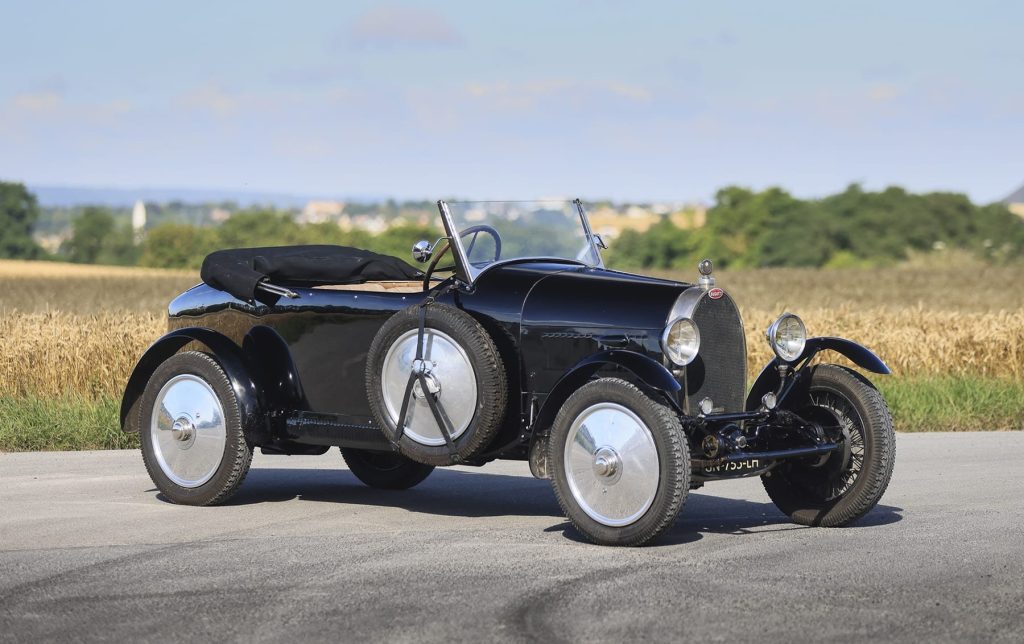
Sold for £393,750
Chassis no. 40565; Engine no. 481. Black over tan. Older restoration, #3 condition.
Equipment: 1496cc/60bhp I-4, 4-speed, disc wheels, wood-rim steering wheel. Sale includes spare enclosed bodywork by Million-Guiet.
Condition: Sold new in France with closed coachwork. Unknown history until 1970, when it was recorded as fitted with the Million-Guiet coupe body. Fitted with the current and desirable Grand Sport bodywork in 2005. Represented as matching-numbers drivetrain. Driven regularly by Ettore Bugatti’s granddaughter (and daughter-in-law of the car’s then-owner) Caroline Bugatti from 2005 to 2022. Good paint with some cracks here and there. Straight chassis and clean mechanicals. Engine overhaul within the past year. Clean wheels with newish tyres. Aged leather and a replacement dashboard. An older restoration with a few rebodies and some gaps in its history, but an attractive and usable car.
Bottom line: Introduced in 1926 to replace the Brescia as Bugatti’s small car, the Type 40 combined a modified version of the Type 37 race car’s engine with three valves per cylinder. Nearly 800 were built with various body styles. But even though this is a small car with a small engine and unexceptional history, it’s still a Bugatti and that unsurprisingly translates to a price deep into six figures.
Lot 9: 1935 Bugatti Type 57 Atalante
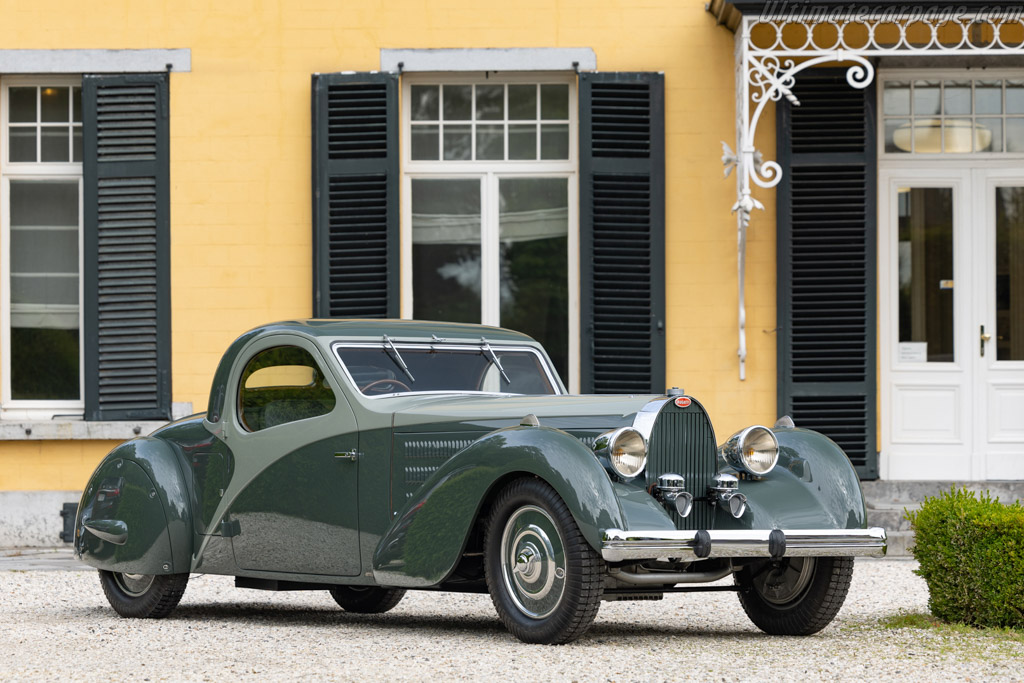
Sold for £2,362,500
Chassis no. 57252; Engine no. 195. Green and grey over grey leather. Recent restoration, #2+ condition.
Equipment: 3257cc/135bhp I-8, 4-speed, centrelock wheels, dual horns, wing skirts, wood-rim steering wheel, Jaeger gauges.
Condition: One of the first Atalante coupes built. Represented as one of three cars left of 10 Series I chassis bodied as an Atalante. Claimed to retain its original chassis, engine, and coachwork per factory records. Provenance includes known American and European collectors. A simply superb presentation on every surface. Immaculate paint leads to perfect chrome, glass, and mechanical presentation. The two-tone paint works well and looks classy. A historic Bugatti with a fitting restoration standard.
Bottom line: The Type 57 was one of Bugatti’s masterpieces, and despite a high price tag it sold quite well, with more than 700 built. Just 33 got the Jean Bugatti–penned Atalante coachwork, with another 17 built on the lower 57S chassis. Other Atalante-bodied cars on the 57S or supercharged 57SC chassis have sold for significantly more, but this is a fair result. The same car sold, before a recent repaint, for £1,499,000 at the Bonhams Goodwood Revival sale in 2019. The higher result here reflects the work done since as well as the general growth in the market over the past five years, but also shows that top-quality prewar collector cars with desirable features and known histories are still in demand and probably always will be.
Lot 10: 1933 Bugatti Type 43A Roadster
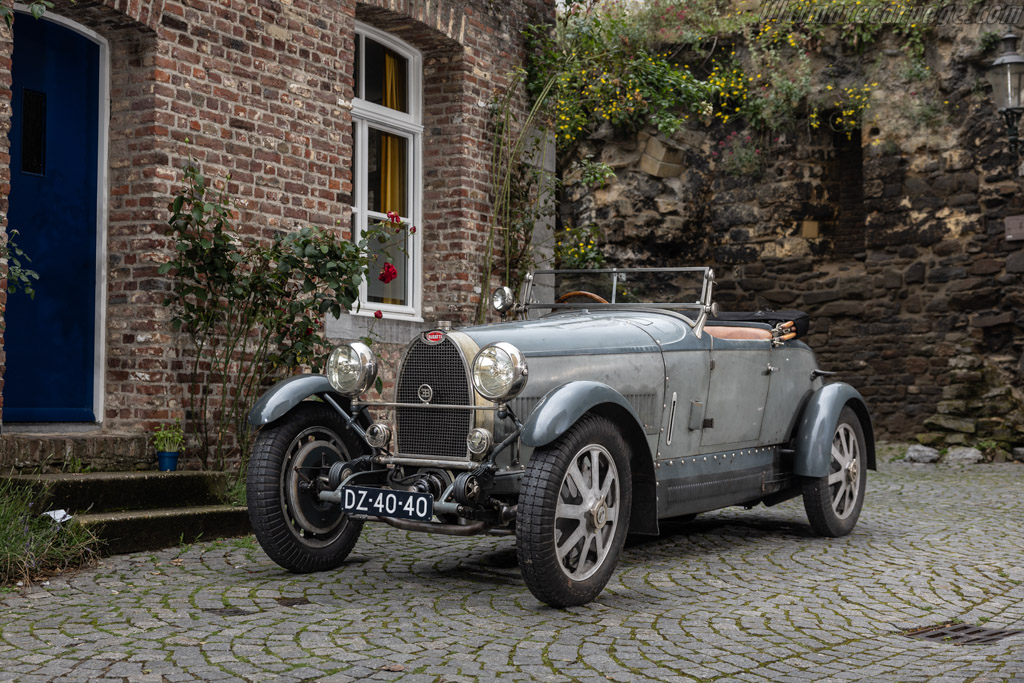
Sold for £2,981,250
Chassis no. 43309; Engine no. 106. Grey over tan. Unrestored original, #3- condition.
Equipment: 2262cc/120bhp supercharged I-8, 4-speed, spotlight, rear-mounted spare, wooden steering wheel, Jaeger gauges.
Condition: One of 19 Jean Bugatti–designed Type 43A roadsters built and 10 known survivors. Built in April of 1929 but didn’t go to its first Parisian owner until five years later, as these complex and expensive Grand Prix–engined road cars were tough to sell. Largely original with one older repaint. Very aged paint on the main body but newer on the wings. Aged wheels but still presentable. Newer seat leather but with a perfect used look to match the general patina of this little gem.
Bottom line: Capable of an easy 100mph, the Type 43 Grand Sport combined a detuned version of the supercharged eight along with the alloy-rim wheels from the Type 35B Grand Prix car with a modified chassis from the Type 38 road car. The rear of its roadster bodywork also looks uncannily like that of a ’32 Ford, especially from the side. There’s nothing ’32 Ford about this price, though, as the bidders recognised the car’s preservation and desirable configuration. It was the star of the auction and deserved to be.
